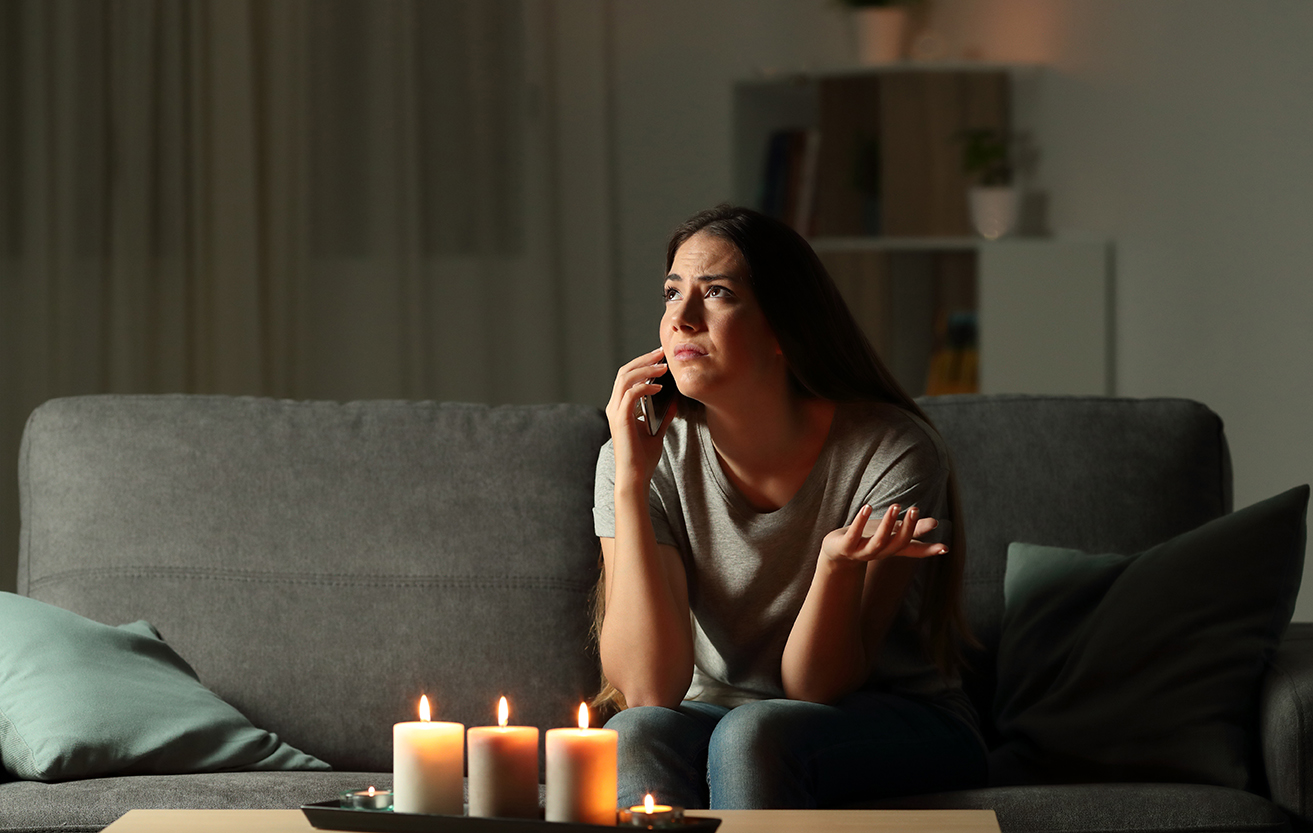SunPower, which has multiple offices in California, has many employees affected by the state’s Public Safety Power Shutdowns (PSPS), and the irony of working for a company that helps provide clean energy worldwide while not having electricity for days isn’t lost on anyone. Marin County resident Jon Thompson, SunPower Monitoring Product Owner, offers a personal look at life during a mandatory power outage.
Life during a PSPS is unsettling. I think incessantly about the next thing I need to do, repeatedly loading the PG&E power outage page on my phone to find out when the blackout will end and trying not to worry about my kids’ safety as they slumber in the next room.
Our most recent power outage lasted 48 hours. “Only 48 hours,” you might say, but it felt like an eternity because so much was turned upside down with a flip of the switch.
When you first lose power, it feels exciting. The entire county was dark. That’s 259,000 people suddenly without power, something I don’t remember seeing in my lifetime. It was eerily quiet, and the only thing you could see was the errant solar-powered utility light or the sweep of a neighbor’s flashlight.
If your cell phone is still charged and the cell towers are working, you can read the news. And thankfully, we have a gas stove, so we knew we’d be able to cook meals. But our home’s heater didn’t work since the blower fan had no power and the high winds were cold. Our outdoor lights were out, so in the widespread darkness, we didn’t feel as safe, though we saw more police patrolling the streets. I realized I had misplaced one of my headlamps somewhere on a shelf. We settled in and eventually fell asleep.
The next morning was like any other. Once the sun comes up, life kind of returns to normal. But you realize your phone may not last much longer, nor will the cold in the refrigerator, so you remind the kids to quickly open and close the refrigerator door. Sunday unfolded as it normally would, but without coffee, other than the Starbucks at the local market, with 30 people standing in line.
Those in line weren’t just our neighbors. Some were evacuees from the 76,000-acre Kincaide fire, a fire that unfortunately represents exactly why PG&E and Southern California Edison are turning off power to sometimes as many as a million people at a time — to try to avoid out-of-control blazes that threaten lives and entire cities. I see these evacuees buy groceries and then sit dazed in their cars in the parking lot, likely trying to figure out what to do next.
POWER OUTAGE INSPIRES CALIFORNIA RESIDENTS TO THINK DIFFERENTLY ABOUT ENERGY
On Monday afternoon, I found myself sitting on the curb in front of our house as my young son played behind me. I chatted with the neighbors, who told me how they saw people with medical devices, such as hearing aids or an oxygen machine, using the community center charging stations. There were also CPAP users there and kids with stacks of cell phones using the wifi while they charged their family’s electronics.
Hearing things like that put my struggles into perspective and reminded me to be humble. However, there was some anger and frustration. We had begun to grow accustomed to our new reality, but we didn’t like it. Everyone I spoke with commented that something had to change, that they were going to do it differently next time, and that dependence on one source of power had become an unpleasant realization. You could sense a seismic shift in their thinking and hear in their voices the conviction that next year, during fire season, they’ll do things differently.
As a company, we’ve been hearing from many Californians who are now considering going solar to save money, gain more independence from the grid, and help combat the global warming that many think contributes to weather conditions that are worsening the state’s fire seasons.
In September, we announced a new product, the SunPower Equinox Storage System, that now has a whole new meaning for many California homeowners, given that such PSPS events could continue for years to come. This solar storage solution can power select appliances* (to help prevent leaking refrigerators) or more, depending upon the size of the battery. I certainly wish I had that battery now!
I thought about my power outage while staring across the bay at the bright lights of Oakland and San Francisco, places that seemed oblivious to what was happening to us in our small, effete community.
How could this happen to us with all our tech trappings and high-end EVs? The PSPS has level-set us all on what control we do and do not have and what choices we can and cannot make. I thought of all the things I’ll do differently next time, the courtesy and grace I had seen my fellow inhabitants exhibit at this stressful time, and how I had been forced into an appreciation of what is actually important and necessary to make day-to-day life livable for me and my family.
And, then, the lights came on.
*”Essential Appliances and Devices” are determined by the homeowner before installation and typically include lights, select appliances, and outlets for devices. The battery storage system should not be relied upon as a power source for critical medical devices. The ability to power appliances and devices during an outage will vary depending on a number of factors, including, but not limited to, the amount of energy stored in the battery, the amount of wattage used by the appliances and electronics connected to the battery storage system, the age of the battery, the battery’s ability to recharge during daylight hours due to weather, the frequency and duration of battery usage, and other factors. Battery life will decrease with time and use.
This post originally appeared on the SunPower Resources Blog.
Ready to start saving with Solar? Don’t wait; the solar tax credit expires this year! Get started by calculating your solar savings online, or call us for a free quote at (866) 755-8602.








